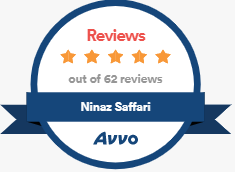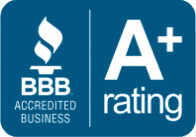Have you been ARRESTED or contacted by the Police, a Detective, FBI, or CPS?
Cocaine and Crack Possession, Sale, and Manufacturing Defense Lawyer in Los Angeles
Possession/Possession For Sale/ Manufacturing Of Cocaine & Crack in Los Angeles
Cocaine is a stimulant classified as a Schedule II drug under the U.S. Controlled Substances Act: https://www.dea.gov/drug-information/csa.
“Crack” (also known as “rock” or “base” in LA County) is a form of cocaine, sometimes referred to by law enforcement as “cocaine base”, made by mixing the powder with other substances to create a hard, waxy-like product.
Cocaine itself has limited medical uses and is highly addictive and, thus, highly regulated both in California and the rest of the country. Possessing for simple use or sale can result in steep consequences, and you face even harsher penalties for manufacturing crack or cocaine.
California Laws regarding Cocaine & Crack
Cocaine and crack are obviously illegal drugs in California. Therefore, possession, sale, transportation, and manufacturing of cocaine or its forms are unlawful. Since cocaine is a controlled substance, the laws punishing cocaine-related offenses could also apply to other controlled substances.
See: https://www.deadiversion.usdoj.gov/schedules/
Cocaine is one of the most notorious substances in California – not unlike fentanyl, opioids, heroin, and methamphetamine, leading to numerous attempts to control its abuse, sale, and transportation in this state.
Until 2000, California had strict laws regarding the possession, sale, and manufacture of cocaine. The laws have relaxed a little, especially with Proposition 36, which allowed certain non-violent drug offenders to access “Drug Court”: https://www.courts.ca.gov/5979.htm and other Drug Diversion (California Penal Code section 1000: https://leginfo.legislature.ca.gov/faces/codes_displaySection.xhtml?lawCode=PEN§ionNum=1000) programs.
With Prop 36, non-violent offenders do not have to serve time in jail or prison if they successfully participate in drug treatment programs and adhere to the conditions imposed during the treatment period.
A non-violent drug offender, according to Prop 36, is an offender arrested and charged for using, being under the influence of, or possessing certain narcotics for personal use. These narcotics include cocaine, peyote, heroin, GHB, meth, marijuana, ketamine, and Ecstasy/MDMA.
See: https://lao.ca.gov/ballot/2000/36_11_2000.html
Possession of Cocaine or Crack (California Health and Safety Code section 11350: https://codes.findlaw.com/ca/health-and-safety-code/hsc-sect-11350.html)
Possession of crack or cocaine is a crime under H.S.C. § 11350, which prohibits the possession of a controlled substance for personal use. Personal possession of crack or cocaine is considered a relatively benign offense, and the defendant could therefore sign up for a drug diversion program if eligible.
When charged with possession of crack or cocaine for personal use, the prosecution must prove the following elements to be true beyond a reasonable doubt:
- You possessed crack or cocaine;
- You knew of the presence of crack or cocaine;
- You knew that the substance was cocaine;
- The cocaine or crack was in a usable amount.
See also: Possession of Methamphetamine (California Health and Safety Code section 11377: https://codes.findlaw.com/ca/health-and-safety-code/hsc-sect-11377.html)
Possession of a Controlled Substance While Armed with a Firearm (California Health and Safety Code section 11370.1: https://codes.findlaw.com/ca/health-and-safety-code/hsc-sect-11370-1.html)
Possession of a Controlled Substance with Intent to Commit Sexual Assault (California Health and Safety Code section 11350.5: https://leginfo.legislature.ca.gov/faces/codes_displayText.xhtml?lawCode=HSC&division=10.&title=&part=&chapter=6.&article=1 & California Health and Safety Code section 11377.5): https://codes.findlaw.com/ca/health-and-safety-code/hsc-sect-11377-5.html
CALCRIM Number 2303 (“Possession of Controlled Substance While Armed with Firearm — Health & Saf. Code § 11370.1”): https://www.justia.com/criminal/docs/calcrim/2300/2303/
CALCRIM Number 2304 (“Simple Possession of Controlled Substance — Health & Saf. Code §§ 11350, 11377”): https://www.justia.com/criminal/docs/calcrim/2300/2304/
CALCRIM Number 2306 (“Possession of Controlled Substance with Intent to Commit Sexual Assault — Health & Saf. Code §§ 11350.5, 11377.5”): https://www.justia.com/criminal/docs/calcrim/2300/2306/
To further explain these elements, the prosecution will prove that you had possession of cocaine if:
- You had it on your person;
- The cocaine or crack was in a place you have access to and control over – for example, your car.
By knowledge, the prosecution will have to establish that you were aware of the presence of cocaine and its nature.
A usable amount is a quantity sufficient to be used as a controlled substance, regardless of its ability to get you high.
Punishment for Possession of Cocaine or Crack Conviction (Health and Safety Code § 11350)
Possession of cocaine or crack for personal use is typically charged as a misdemeanor. It carries a potential sentence of up to a year in county jail. Defendants may also qualify for either drug diversion or drug court, which also allows them to participate in a drug treatment program instead of serving a jail term.
Defenses to a Charge of Possession of Cocaine or Crack (Health and Safety Code § 11350)
The defenses one can use in fighting these charges include:
- The cocaine did not belong to you. Possession for personal use occurs when you have the drug on your person or in a place you control. However, if the prosecution cannot prove it was on your person or in a place you control, you are not guilty.
- Police misconduct. Drug crimes are rife with police misconduct. This includes illegal search and seizures and entrapment. Illegal search or seizure occurs when police make an illegal stop or search your property without a warrant. In some cases, it occurs because the police search your property beyond what was allowed in the search warrant. On the other hand, entrapment occurs when a law enforcement official makes you commit a crime you would not have committed.
- You were not aware that the substance was cocaine. If you were unaware that the substance was cocaine or another controlled substance, you cannot be guilty of this offense. Cocaine is a white powder. Therefore, it is easy to mistake it for something else, for example, sugar or baking powder. However, even if you said you were unaware that the substance was cocaine, you can still be charged with simple possession if you knew it was some type of illegal drug.
- The cocaine was seized in anunusable amount. If the cocaine was found in traces, you could challenge the case against you as the law requires that you have a sufficient amount to be used in at least a single dose (regardless of whether it produces any psychoactive effect) for you to be guilty of possession.
See: https://www.findlaw.com/state/california-law/california-cocaine-laws.html
See also: CALCRIM Number 2305 (“Defense: Momentary Possession of Controlled Substance”): https://www.justia.com/criminal/docs/calcrim/2300/2305/
Criminal Defense
Menu










Possession of Cocaine or Crack for Sale (California Health and Safety Code section 11351:
https://codes.findlaw.com/ca/health-and-safety-code/hsc-sect-11351.html)
Possession of cocaine or crack for sale is obviously more serious a crime than possession merely for personal use. It is always charged as felony with a potentially long jail term.
When charging you with possession for sale under H.S.C. § 11351, the prosecution must prove that in addition to having cocaine, you intended to sell it or have someone sell it on your behalf. The prosecution must also prove that there were enough quantities of cocaine or crack for sale. Some of the indicators that you could be possessing cocaine or crack for sale include:
- You had large quantities of crack or cocaine;
- You packaged the cocaine in separate packaging suggesting the intention to distribute them;
- Multiple people entering and leaving your place within a short timespan;
- Scale, measuring equipment, and other paraphernalia that would be associated with selling drugs;
- Additional packaging material;
- A lot of cash in small denominations.
See: Possession for Sale of a Controlled Substance (California Health and Safety Code section 11351: https://codes.findlaw.com/ca/health-and-safety-code/hsc-sect-11351.html)
Possession for Sale of Methamphetamine (California Health and Safety Code section 11378: https://codes.findlaw.com/ca/health-and-safety-code/hsc-sect-11378.html)
Possession for Sale of Methamphetamine While on Bail (California Penal Code section 12022.1: https://codes.findlaw.com/ca/penal-code/pen-sect-12022-1.html)
CALCRIM Number 2302 (“Possession for Sale of Controlled Substance — Health & Saf. Code §§ 11351, 11351.5, 11378, 11378.5”): https://www.justia.com/criminal/docs/calcrim/2300/2302/
CALCRIM Number 2352 (“Possession for Sale of Cannabis — Health & Saf. Code § 11359”): https://www.justia.com/criminal/docs/calcrim/2300/2352/
Punishment for Possession of Cocaine or Crack for Sale Conviction (H.S.C. section 11351)
The low, mid, and high prison terms for a possession of cocaine for sale conviction is 2, 3, and 4 years. For crack, the range is higher – 3, 4, and 5 years.
You could face additional consequences for each additional sale you made or intended to make. You could also be deported if you are a legal immigrant in the U.S.
You also face additional penalties for possessing or purchasing cocaine base for sale. The exact sentencing enhancements for possessing cocaine base depend on the weight of the base. For instance, if the substance exceeds 80 kilograms, you could face an additional 25 years in prison and could pay a fine as high as eight million dollars.
Defenses to a Charge of Possession of Cocaine or Crack for Sale (H.S.C. section 11351)
The defense strategies that work for possession of cocaine or crack for sale include:
- You did not know that the substance you carried was cocaine, crack, or any other controlled substance. Knowledge is a fundamental element of possession of cocaine or crack for sale. However, if you are unaware of the substance’s nature, you cannot be guilty of this crime. This defense may particularly work if you are not one with a known drug history (whether as a user or dealer).
- You did not possess crack or cocaine. This defense works where the drugs were not found in your physical possession.
- You did not know that you possessed the drugs. You could find yourself charged for possession even when you were not aware of the presence of the drugs. This could be due to someone planting the cocaine on you or your property.
- The cocaine or crack was in insufficient quantities to sell. If you only had trace amounts of cocaine, you cannot be charged with possessing cocaine for sale.
- You did not intend to sell the cocaine or crack. Using this defense, you are admitting that you possessed cocaine or crack. However, you intended to use it yourself rather than sell it. If this defense works, the court will reduce your charges to the lesser offense of simple possession.
People convicted of possessing crack or cocaine for sale are mostly ineligible for any alternative sentencing. However, if your charges are reduced to simple possession, you could participate in drug court or drug diversion, which could result in the eventual dismissal of your charges.
Manufacturing Cocaine and Crack (Health and Safety Code section 11379.6: https://codes.findlaw.com/ca/health-and-safety-code/hsc-sect-11379-6.html)
Manufacturing cocaine or crack is an offense under H.S.C. § 11379.6(a), which makes it a crime to manufacture, produce or compound a narcotic. If you are facing charges of manufacturing crack or cocaine, the prosecution must prove these elements:
- You manufactured, made, or compounded crack or cocaine;
- You knew that the substance was crack or cocaine.
Even if you did not directly manufacture the cocaine or crack, the prosecution could secure a conviction by proving that you knowingly participated at the beginning or intermediate steps of creating cocaine or crack.
See also: Manufacture of an Imitation Controlled Substance (California Health and Safety Code section 109575: https://codes.findlaw.com/ca/health-and-safety-code/hsc-sect-109575.html);
CALCRIM Number 2330 (“Manufacturing a Controlled Substance — Health & Saf. Code §§ 11379.6(a), 11362.3”): https://www.justia.com/criminal/docs/calcrim/2300/2330/
CALCRIM Number 2331 (“Offering to Manufacture a Controlled Substance — Health & Saf. Code §§ 11379.6(a) & ( c )”): https://www.justia.com/criminal/docs/calcrim/2300/2331/
CALCRIM Number 2335 (“Possession with Intent to Manufacture Methamphetamine or N- ethylamphetamine — Health & Saf. Code § 11383.5(a)”): https://www.justia.com/criminal/docs/calcrim/2300/2335/
CALCRIM Number 2336 (“Possession with Intent to Manufacture PCP — Health & Saf. Code § 11383(a)”): https://www.justia.com/criminal/docs/calcrim/2300/2336/
CALCRIM Number 2337 (“Possession with Intent to Manufacture Methamphetamine — Health & Saf. Code § 11383.5(b)(1)”): https://www.justia.com/criminal/docs/calcrim/2300/2337/
CALCRIM Number 2338 (“Possession of Isomers or Precursors with Intent to Manufacture Controlled Substance — Health & Saf. Code § 11383.5( c )-(f)”): https://www.justia.com/criminal/docs/calcrim/2300/2338/
Punishment for Manufacturing Cocaine and Crack Conviction (H.S.C. section 11379.6)
Manufacturing cocaine or crack is a felony in California. If convicted, you face a minimum of three years and up to seven years in state prison.
Manufacturing cocaine is considered an aggravated felony in California that could also lead to the deportation of a legal immigrant. In addition to these consequences, you will lose your right to possess, buy, or own a firearm in California.
Defenses to a Charge of Manufacturing Cocaine and Crack (H.S.C. section 11379.6)
Fortunately, you can fight these charges by challenging some of the elements of the offense. The most common defenses to manufacturing crack or cocaine include:
- You only participated in the preparatory stages of the process. You cannot be found guilty of manufacturing cocaine or crack unless the court can prove that you participated at the beginning or intermediate steps of the manufacturing process.
- You did not know that what was being made was cocaine, crack, or a controlled substance. To be guilty, you must have known that you were producing a controlled substance. However, if you did not realize this was a controlled substance, you may not be guilty of manufacturing crack or cocaine.
- You were arrested during an unlawful search and seizure. While manufacturing cocaine or crack is illegal, it is also unlawful for a police officer to search a property or seize the items within it without a valid search warrant. Therefore, if police arrested you during an illegal search or seizure, you can file a motion to suppress that evidence.
- You were a victim of police entrapment. Entrapment occurs when a law enforcement officer pressures, harasses, or threatens you into committing the offense. When using this defense, you must show that you manufactured crack or cocaine due to the entrapment.
Drug Diversion (California Penal Code section 1000: https://leginfo.legislature.ca.gov/faces/codes_displaySection.xhtml?lawCode=PEN§ionNum=1000)
Drug diversion is a form of alternative sentencing that allows defendants to participate in a drug treatment program instead of a jail sentence. For defendants charged with offenses related to cocaine, you are only eligible for drug diversion if you were convicted of possession for personal use.
You can participate in drug diversion under P.C. § 1000 if:
- You have not had a disqualifying conviction in the last five years;
- You were not involved in violence or threatened violence when committing the offense;
- There’s no evidence of a serious drug offense such as selling or manufacturing drugs; and
- You have not had a felony conviction in the last five years.
Before approving you for pre-trial diversion, the court considers your age, employment status, educational background, family and community ties, past substance use behavior, and other mitigating factors that show you could benefit from a drug treatment program instead of incarceration.
You also have the freedom to accept or decline participation in a drug diversion program.
During the drug diversion program, you must adhere to a set of conditions, including taking regular drug tests. The court receives regular reports on your progress in the drug diversion program.
The prosecution could initiate a motion to terminate your participation in the drug diversion program if you fail to adhere to the conditions of pre-trial diversion. Approval of this motion means your case will proceed towards trial.
However, if you complete the program successfully, your case will be dismissed.
See also: Mental Health Diversion (California Penal Code section 1001.36: https://leginfo.legislature.ca.gov/faces/codes_displaySection.xhtml?sectionNum=1001.36.&lawCode=PEN)
Judicial Diversion (Court Initiated Diversion) (California Penal Code section 1001.95: https://codes.findlaw.com/ca/penal-code/pen-sect-1001-51.html)
Informal Diversion (California Penal Code section 1001.94: https://law.justia.com/codes/california/2016/code-pen/part-2/title-6/chapter-2.96/section-1001.94; California Penal Code section 1001.95: https://codes.findlaw.com/ca/penal-code/pen-sect-1001-51.html)
Military Diversion (a.k.a. Veterans Diversion) (California Penal Code section 1001.80)
Proposition 36 Drug Treatment Diversion Program: https://lao.ca.gov/ballot/2000/36_11_2000.html
Proposition 36 came as a relief for many non-violent offenders as it allows them the option to participate in drug treatment instead of incarceration.
The key difference between drug diversion and Prop 36 is that you must enter a guilty plea before participating in the drug treatment program under Prop 36.
This means that your charges will remain on your record even after the case is dismissed, and you must petition the court to dismiss the charges and your arrest thereafter.
California “Drug Court”:https://www.courts.ca.gov/5979.htm
Drug court is another alternative to traditional sentencing. In California, a drug court offers non-violent drug offender rehabilitation in lieu of jail. Successful candidates have their cases dismissed.
The goal of drug courts is to reduce repeat offenses, promote long-term recovery, and save the amount of money the state would spend on incarceration (as it is cheaper to rehabilitate non-violent drug offenders than incarcerate them).
See: https://www.courts.ca.gov/5979.htm
Drug courts serve adult offenders, parents at risk of losing their children due to drug and substance dependence, and minors dealing with substance use disorders.
A defendant can enter a drug court before or after taking a plea. Repeat offenders are also allowed to enter the program after a conviction. Some of the eligibility requirements include:
- You were charged for simple possession of cocaine or crack;
- You must be willing to participate in counseling, drug education, educational and vocational counseling, and submit to random, regular drug testing;
- You must complete additional court-mandated requirements;
- You must attend school; and
- You must seek and maintain employment with the probation officer as authorized.
See: https://www.dhcs.ca.gov/individuals/Pages/Drug-Courts-Overview.aspx
After your successful participation in drug court, the court will dismiss your criminal charges.
Related Offenses
If you are charged with possession/ possession for sale/ manufacturing of crack or cocaine, you could also be charged with the following offenses:
Operating or Maintaining a Drug House (Health and Safety Code section 11366: https://codes.findlaw.com/ca/health-and-safety-code/hsc-sect-11366.html)
If you are charged with possessing cocaine or crack for sale, you may also be charged with operating a drug house. This offense involves maintaining a place while intending to use it for the sale or use of drugs continuously or repeatedly.
Operating a drug house is a “Wobbler” (California Penal Code section 17(b): https://codes.findlaw.com/ca/penal-code/pen-sect-17.html) offense that carries a maximum sentence of one year in county jail for the misdemeanor and up to three years in state prison for a felony conviction.
See also: CALCRIM Number 2440 (“Maintaining a Place for Controlled Substance Sale or Use — Health & Saf. Code § 11366”): https://www.justia.com/criminal/docs/calcrim/2300/2440/
Manufacture of an Imitation Controlled Substance (H.S.C. section 109575: https://codes.findlaw.com/ca/health-and-safety-code/hsc-sect-109575.html)
It is a crime under H.S.C. § 109575 to manufacture an imitation of a controlled substance. Under this statute, knowingly manufacturing or distributing an imitation of a controlled substance is a crime. The offense is a misdemeanor with a maximum sentence of six months in jail.
See also: Manufacturing a Controlled Substance (California Health and Safety Code section 11379.6: https://codes.findlaw.com/ca/health-and-safety-code/hsc-sect-11379-6.html).
The Los Angeles Defense Attorney Law Firm (LADALF)
Ninaz Saffari has been making Constitutional arguments in drug cases for the better part of two decades with great success. Indeed, she frequently files Motions to Dismiss (California Penal Code section 995: https://codes.findlaw.com/ca/penal-code/pen-sect-995.html) and Motions to Suppress Evidence (California Penal Code section 1538.5): https://codes.findlaw.com/ca/penal-code/pen-sect-1538-5.html
in all types of criminal cases. For example, she recently had one of her 1538.5 motions granted in a major Sex Crimes case (where her client is facing eleven life sentences, in a case involving 36 accusers, including two minors) out of the Clara Shortridge Foltz Criminal Justice Center: http://www.lacourt.org/courthouse/info/ccb
Specifically, Ninaz successfully argued that the police had failed to obtain a special search warrant that complies with the extremely stringent requirements of California Electronic Communications Privacy Act (CalECPA), S.B. 178. The detectives were so clueless, they actually claimed to the judge that they had never even heard of CalECPA, despite the fact that (as Ninaz argued) since its inception six years earlier (January 1, 2016), it has proven to be the most privacy-protective legislation passed in the entire U.S. since then.
See: https://www.eff.org/cases/californias-electronic-communications-privacy-act-calecpa
As a result, the judge agreed with all her arguments and suppressed all electronic and digital evidence seized from her client’s home, office, and vehicle.
"Ninaz is highly professional, organized, and talented."
RobertClient
"I always refer to Ninaz Saffari as a fighter in the courtroom. I walked out of court a free-man due to this attorney's hard work and know-how."
Kevin F.Client
"She not only makes you feel comfortable but she is very competent and experienced in pretty much any kind of situation and scenario. I feel very lucky to know her."
AddyClient